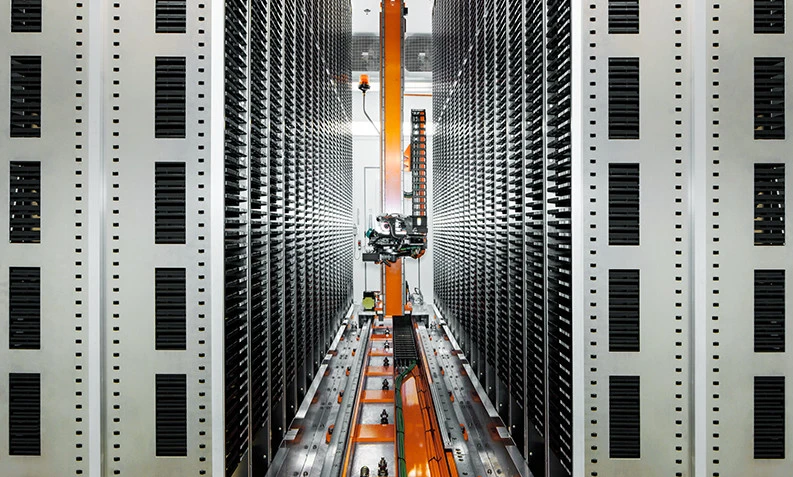What’s next in research and development at Novartis? At our annual earnings announcement on January 25, NIBR President Jay Bradner and Head of Global Drug Development Vas Narasimhan shared their outlook on where we’ll focus our R&D efforts this year, what it means to be a translational drug hunting institute, and why we insist on a collaborative approach to science. Here are a few highlights from the briefing.
An unprecedented opportunity
In his opening remarks, NIBR president Jay Bradner described how medical science is experiencing a unique moment in its development.
“The convergence of guiding insights into the hardwiring of disease, as well as the recent and radical expansion of the science of therapeutics, creates an unprecedented opportunity to render meaningful contributions to humanity,” said Bradner.
Novartis aims to make the most of this opportunity by bolstering our investment in new tools that support high-quality science in the search for new medicines. For example, we’re using the latest technological advances in DNA barcoding to expand our already massive chemical library, a key departure point for identifying potential new treatments. The goal is to go from 3 million molecules to 300 million in the next three years.

This is important because successful drug discovery depends on starting with the right building blocks. Finding that one correct molecule can be as elusive as finding a needle in a haystack. “So in one respect,” Bradner said, “we are only as good as our haystack.”
With our growing chemical library, we can rapidly search through molecules to find the starting points for drug discovery.
Our recently formed global drug development organization, meanwhile, is looking for ways to more efficiently usher promising compounds through clinical testing in patients. “We allocate resources to projects [we believe will address the most significant unmet needs while driving] the most significant growth. Projects we realize are not the right fit for our company are stopped or out-licensed,” said Vas Narasimhan. For example, we recently announced that we’re progressing development of more than 90 new molecular entities and 200 projects in several disease areas including cancer, cardiovascular and ophthalmology.
Pursuing unconventional approaches
While strengthening our foundation, we’re exploring uncharted territory. Modern technology, such as CRISPR for genome editing, could lead to definitive medicines for diseases that were previously thought incurable.
Today, we are exploring CRISPR’s application in intractable diseases like sickle-cell anemia, which has stymied scientists for more than a century. With CRISPR, “we have a machine we can bring into human systems to change, potentially repair, or compensate for errors in the human genome,” Bradner said.
Another example of this kind of innovation is targeted protein degradation (TPD). Many of the proteins that drive disease have evaded drug hunters for decades. We would like to hit these protein targets, but they’ve dodged the conventional molecules in our arsenal. So we’re taking a different approach. We’re working to invent molecules that influence the cell’s own system for degrading proteins to degrade the proteins of interest.
Such approaches have the potential to speed research and drug discovery.
Bradner said that when he first joined NIBR in 2016, he told Chief Executive Officer Joe Jimenez he expected his team to be able to degrade five proteins in five years. “I am now recalibrated to what is possible in an environment like NIBR. In just this calendar year [2016], we have degraded more than a dozen proteins [in the lab].”
From a development perspective, unconventional approaches come in the form of new technologies and approaches to how we run clinical trials.
“We have over 20 trials now running with digital technologies embedded in them,” Narasimhan said. “And we’re looking to continue to build partnerships with companies like Apple and Google as well as a growing number of healthtech start-ups to bring the very best technology to our drug development process.”
Collaborative science
New R&D technologies are being developed in a variety of places, from university labs and biotech startups to multinational companies. Novartis is increasing efforts to find the best technological advances and partnerships. We are agnostic, Narasimhan said, as to “whether that innovation comes internally from NIBR or externally through licensing and M&A transactions,” as long as our scientists have access to the best technologies to advance development.
Today, “science and innovation are highly democratized,” Bradner said. “We intend to practice a much more open science in the years to come. To connect innovation wherever it sits.”
Narasimhan added: “When you look at the next wave of breakthrough medicines for patients, whether it’s with operations, talent or cutting-edge technology, we’re building the organization that can lead innovation for decades to come.”
Want more? Watch the webcast and download the innovation section of the 2016 Annual Report. Learn more about R&D at Novartis on NIBR.com, and get the latest R&D updates @Novartis.